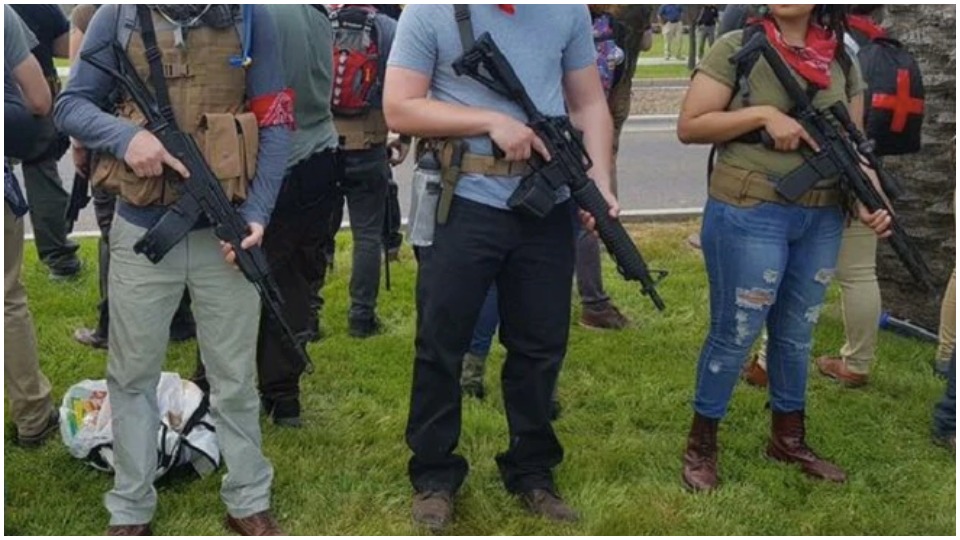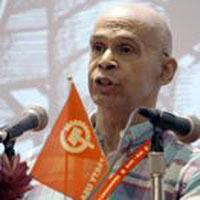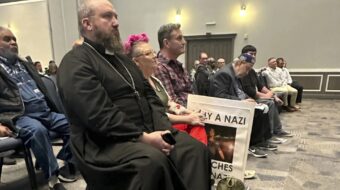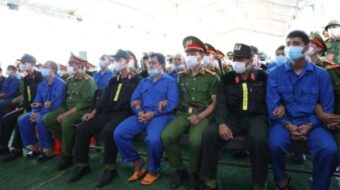
Trump’s hate speech and actions have resulted in horrific casualties in recent days and weeks. Violent words have begotten violent acts. Time and again, domestic terrorists have been encouraged and set loose upon the land.
Grief, fear, and intimidation have followed, but so have outrage, determination, and indignation at the deliberate incitement of white supremacist hatred from the highest office in the land.
Trump’s hostage-video-like condemnation of white supremacy from the White House’s Diplomatic Reception Room and his irresponsible attacks following visits to Dayton and El Paso have increased questions about his fitness for office and calls for his impeachment.
Never before in the history of the Republic has the occupant of the Oval Office so deliberately set neighbor against neighbor, citizen against non-citizen immigrants, and white against everyone else while systematically undermining systems of governance and everything that goes along with them.
A tipping point is approaching—but in what direction?
A tipping point is approaching—but in what direction? The answer depends on the ability of the broad working-class public and beyond to rise to the occasion and act from now until the 2020 election to insure Trump’s defeat.
This is not the first time our country and people have faced down the terrorist threat. Time and again, ruling class forces have resorted to the lynch mob’s rope, the vigilante’s bullet, and the agent provocateur’s bomb. But hope is a resilient thing. Time and again, our workers and people have recovered, resisted, fought back—and won. And important lessons have been learned.
First among these lessons is the importance of building a mass people’s movement. The struggle is not right against left, majorities versus minorities, rural as opposed to urban, white versus black, brown, or Asian. Placing the issue this way is a narrow trap door from which there may be no exit.
Instead, history’s lesson resides in uniting majorities around basic working-class and democratic issues. For example, struggles like the right to organize, to attend school, or ride a bus proved to be winning issues; when broadly placed and fought along militant lines, they have succeeded in isolating and pushing back the extreme racist right.
Partial demands lay the basis for winning bigger and more complete victories.
The International Labor Defense’s historic effort in the 1930s to free the Scottsboro defendants by exposing the lack of due process in the first trial was a winning strategy. This was followed by focusing on the exclusion of African Americans from the jury pool in the second. In the fight to “Free Angela Davis,” the issue that won the first, the broadest, and the most important victory was the fight for bail. This partial victory set the stage for everything that came after.
What should community self-defense look like?
In response to the growing right-wing terror, calls for community self-defense have arisen. Is this the partial issue upon which to build unity against white supremacist violence? In these troubled times, security is an item that everyone should take seriously. The issue, however, is what does security and self-defense consist of?
For the Communist Party USA, which I co-chair, community self-defense means community control of the police by means of elected civilian control boards. Community defense must mean fighting for jobs, decent housing, and health care. Add to that reparations in the form of investment in infrastructure, education, and sports. Community defense means ending institutionalized racism in the justice system and ending voter suppression. And let’s also address the drug crisis and the gangsterism that comes with it. The fact is, assault weapons have long been in our communities. And they are being used by black and brown youth to kill each other in wars over drug turf.
Community self-defense means taking initiative in these struggles and focusing on the key issues—including mobilizing and organizing the vote. It is only by means of winning elections backed by powerful working-class grassroots movements that real change can be effected.
As the civil rights movement grew, the racist opposition shrank
One of the most important lessons of the civil rights movement is that as it grew in size and moral authority, the racist opposition shrank. To be more precise: The freedom movement’s militant non-violent tactics succeeded in defanging and isolating the confederates both within and outside of the South’s ruling circles in business and the police. This was followed by the election of thousands of black, Latino, and women officials throughout the region. The ability of the far right to mobilize masses shrank dramatically—until the rise of Trump.
And indeed, it is because of Trump’s rise that the significance of these lessons returns with full force. These lessons apply to issues like the crisis on the border, plant closings, and climate change. They also apply to the call for common-sense gun measures like background checks.
In our view, seeing community self-defense in the form of workers’ militias, as some have called for, narrows the fight against the right and may be a dead end, brave though it may be. Let’s recall that Frederick Douglass applauded John Brown’s courage at Harper’s Ferry but understood that a winning strategy lay elsewhere.
A winning strategy: avoiding provocations
History has also shown that a winning strategy for dealing a blow to terrorist violence means avoiding provocations and calls to violence—isolate it; end support for it in the board rooms, city councils, state legislatures, and police departments; and put in place people’s power that will set the country on a different course.

Workers will respond as they deem appropriate to violent provocations on the picket line or in the community.
The CPUSA condemns terrorist violence from whatever source. Power comes not from the barrel of a gun but from the united action of workers and people in struggle. We condemn as well the calculated incitement of a culture of violence and division from the highest offices of the land.
Let’s end this by making one thing clear: We do not call for taking away workers’ guns. We do demand measures now, not later, to isolate and defang the extreme right—and that means addressing their influence in all areas, starting at the top, in government, business, the military, the police etc. These problems would not exist but for their active promotion.
Joe Sims is co-chair of the Communist Party USA.












Comments